Internal Protection in Aluminum Beverage Cans.
In addition to metalworking, we also work in the food industry and therefore have to take care of product quality to the extreme, especially when it comes to the internal protection of our packaging in the two-piece can.
Let’s talk briefly about this process, with some tips to keep in good condition this important equipment that is part of our daily operational routine.
Currently we have several models of IS (Inside Spray) or IC (Inside Coating). Equipment that operates at high speed, ranging from 300 to 400 cans per minute.
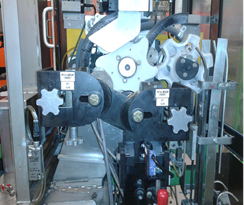
Some older, some more modern, but the essence of the team never changes. The operating principles are the same, regardless of models or manufacturers. All with the same Purpose.
Apply a layer of internal varnish, with the mission of protecting the can from the action of the liquid, preserving its flavour characteristics.
Protects the can from corrosion and reduces friction with Necker tools by forming the neck.
But how does it work?
The machine is fed by a conveyor belt and a can rower. These cans are fed into the feed hoppers of the inliner coaters and fit synchronously into the starwheel.
Usually, the star usually has 06 seats, and each seat has a pulley, in charge of holding and rotating it. The rotation of the pulleys is driven by a motor and a belt.
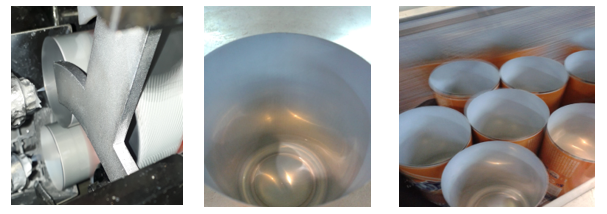
After receiving the varnish, the can goes to the IBO, an oven in charge of drying and curing the varnish.
This process is continuously monitored through varnish and coating weight tests, exposed metal control, each with its specific frequency based on standards set by the quality sector.
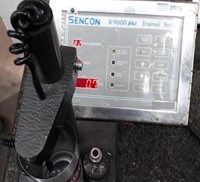
Each product has its own specification limits. Any deviations should be identified and treated promptly. It is recommended that each plant deploy its records and troubleshoot problems to train technicians. This is essential to identify and treat the root cause of the exposed metal.
In this part of the process, standardization of machine configurations must be created and followed in a disciplined manner. This will ensure the efficiency of the equipment and help with traceability and investigation in case of any deviation.
As an example, we have the following table for the calculation of the number of turns. The idea is to get the nearest whole number.

This table has a specific formula and shows us how we can reach the number of turns necessary for a correct application of the varnish layer.
The random or disorderly change in the gun trigger time can generate several inconveniences, such as variations of the varnish layer, waste of varnish, or increased soiling of the machines.
In addition to firing time, it is recommended to standardize height, distance, spikes, gun angle and pressures in general.
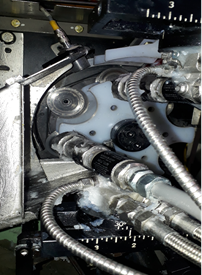
It is therefore important that the configuration is determined and used in a disciplined manner, as it prevents unnecessary adjustments being made.
It is important to note that each plant develops its configuration together with equipment manufacturers and varnish suppliers according to can formats and product type. Below is an example configuration for 12oz formats.

This is an example of a device configuration. Extending these standards to all the equipment you have online generates standardization and gives us the guarantee of a good performance. These adjustments must be checked daily as, although they have very robust fastening systems, they are susceptible to failure and can lose their position.
In the past, analog modules did all the electronic control of the equipment, but lacked protection and monitoring resources, often leaving the process uncovered by failures.
With the advance of technology, today we have access to control and monitoring systems that guarantee an excellent performance, protecting the process against operational deviations of the equipment.

It is possible to monitor online and in real time, pressures, trigger times, various graphs for analysis, warnings and fault histories, gun calibrations, etc.
Finally, the essential routine to maintain good performance and high availability in the inner lining.
The cleaning of the equipment.
The rigorous cleaning of the nozzles, feed and exit guides, pulleys, stars, in the plating not only guarantees the quality of the product, but it also indicates the care with the 5S and the maintenance of the sector.
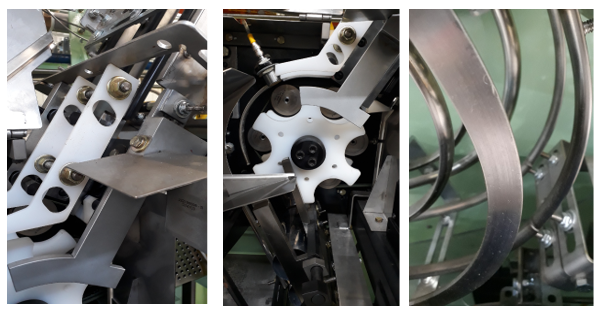
There are an infinite number of process, quality and maintenance controls that we must always follow, since the fulfillment of these routines will guarantee an excellent performance in all aspects.
André Malta.
Mundolatas Advisor




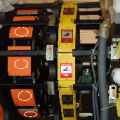




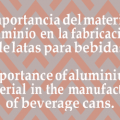




looking for beer can coating
What is the varnish made out of?